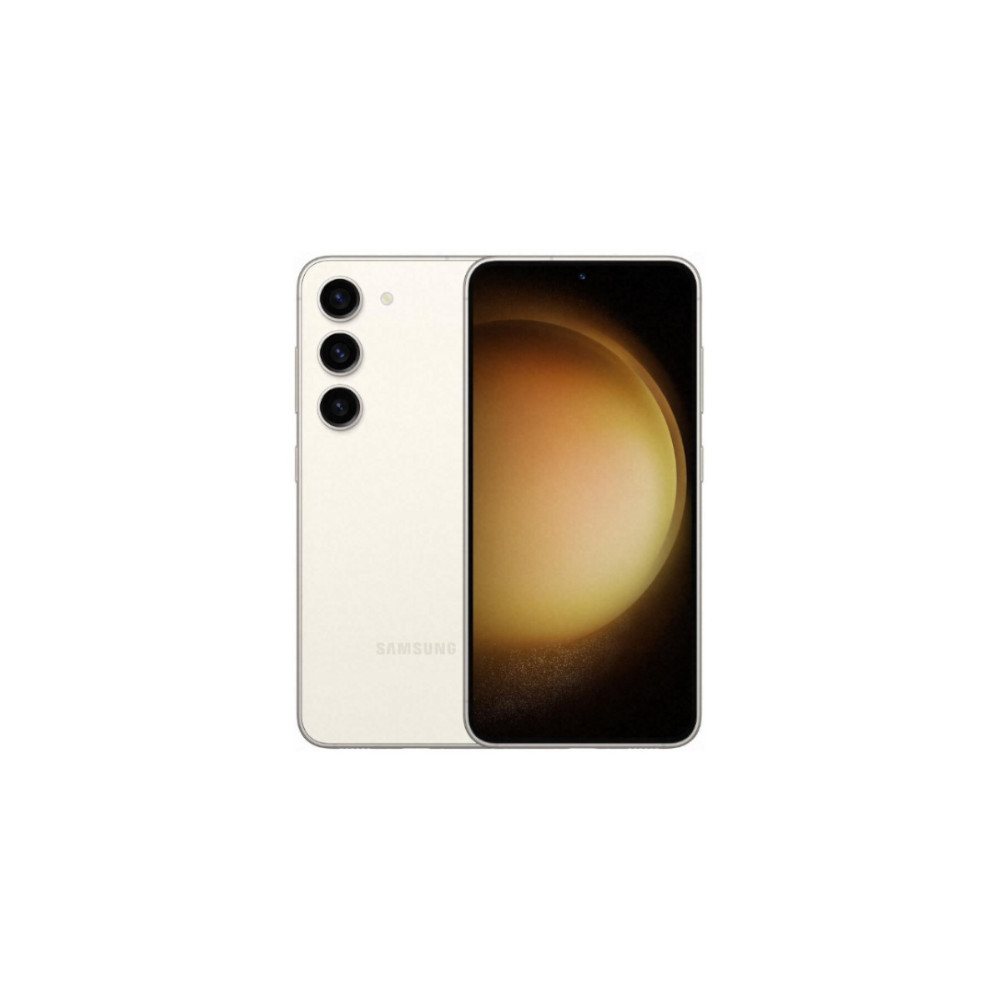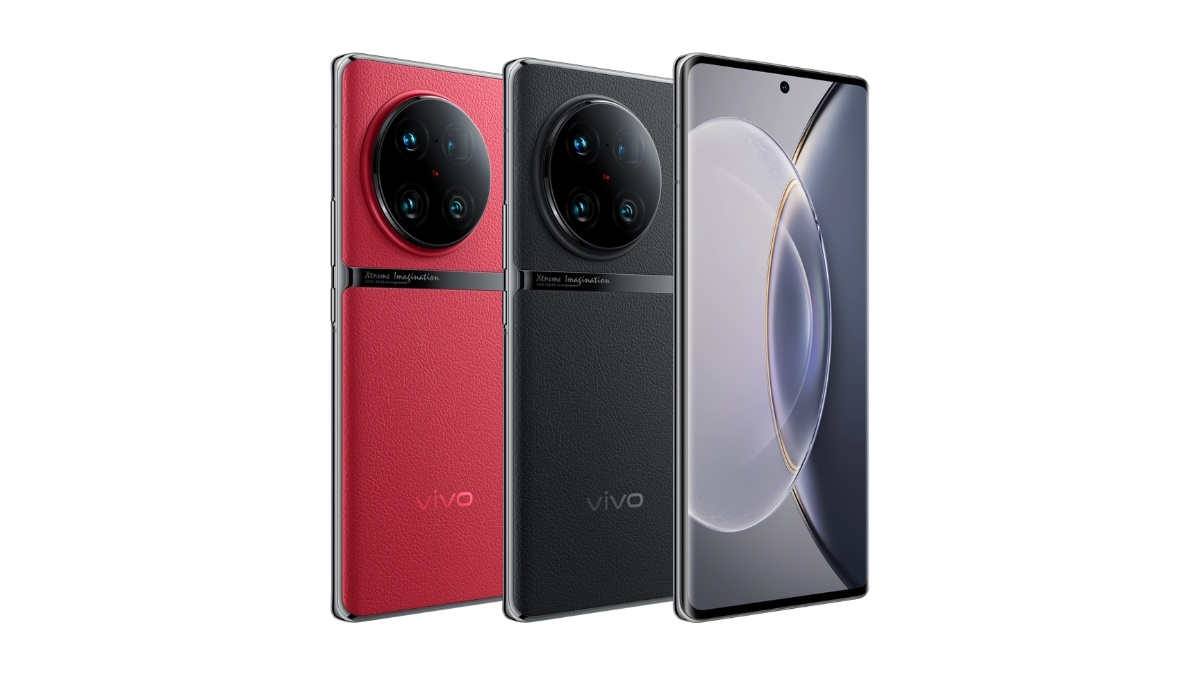Affiliate links on Android Authority may earn us a commission. Learn more.
The best Snapdragon 8 Gen 2 phones you can buy
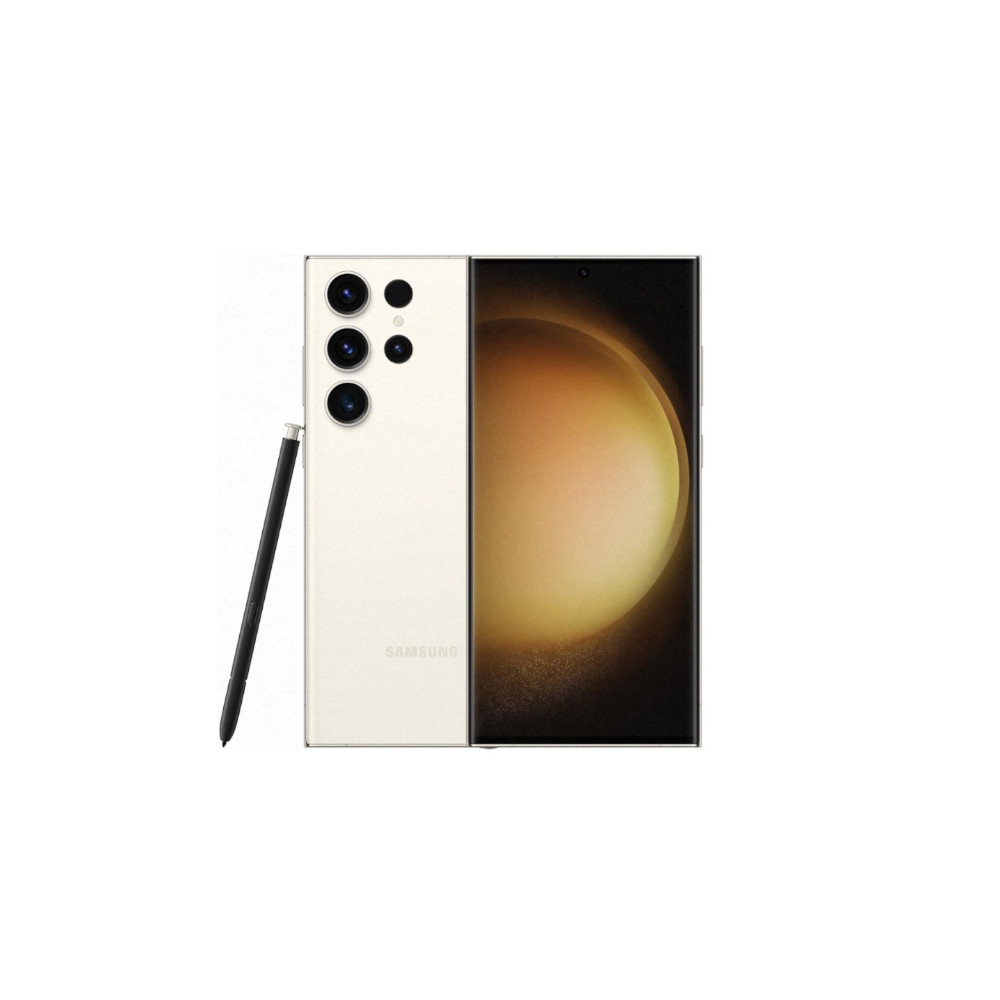
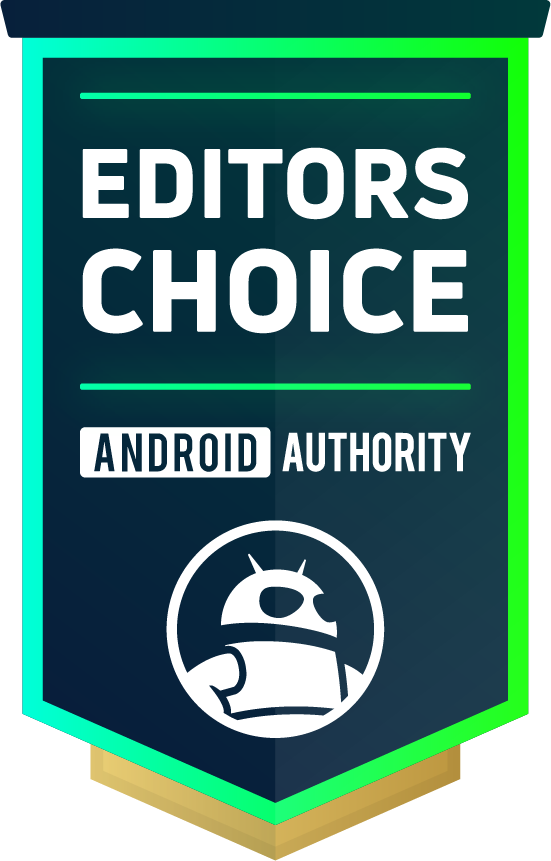



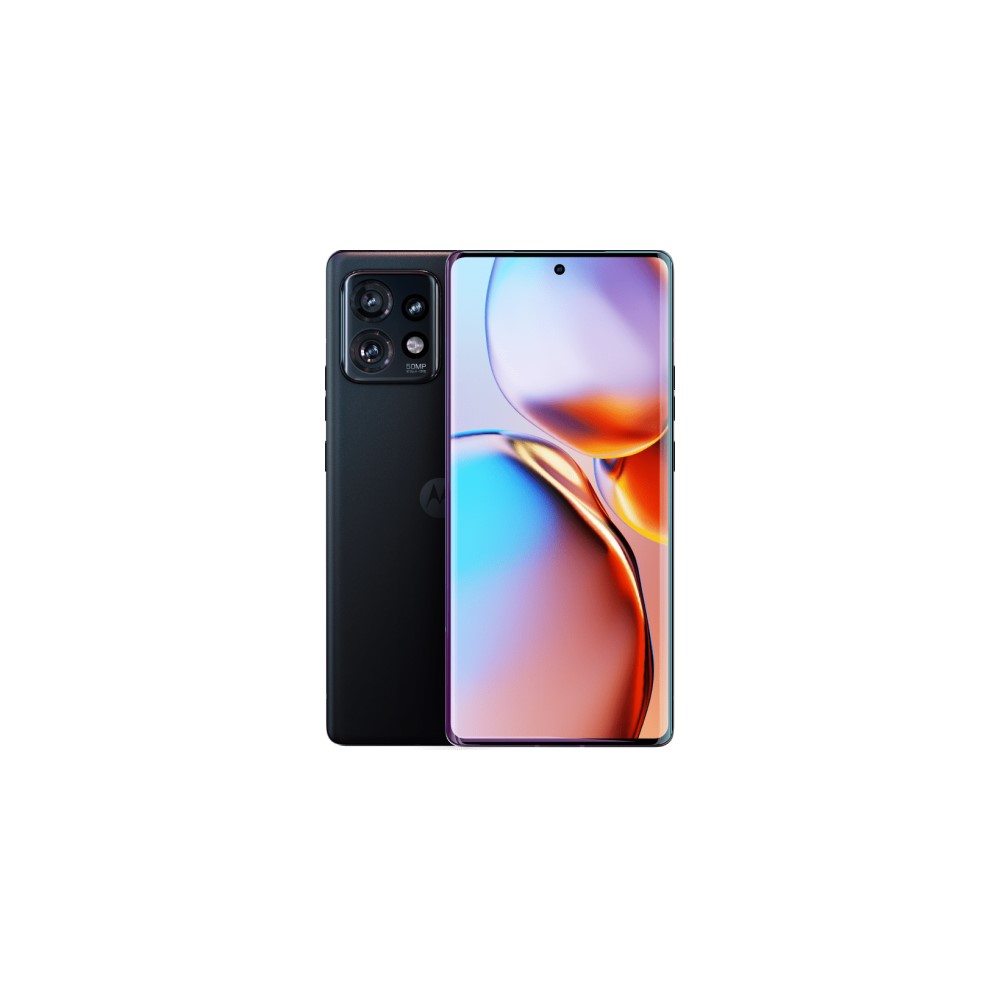

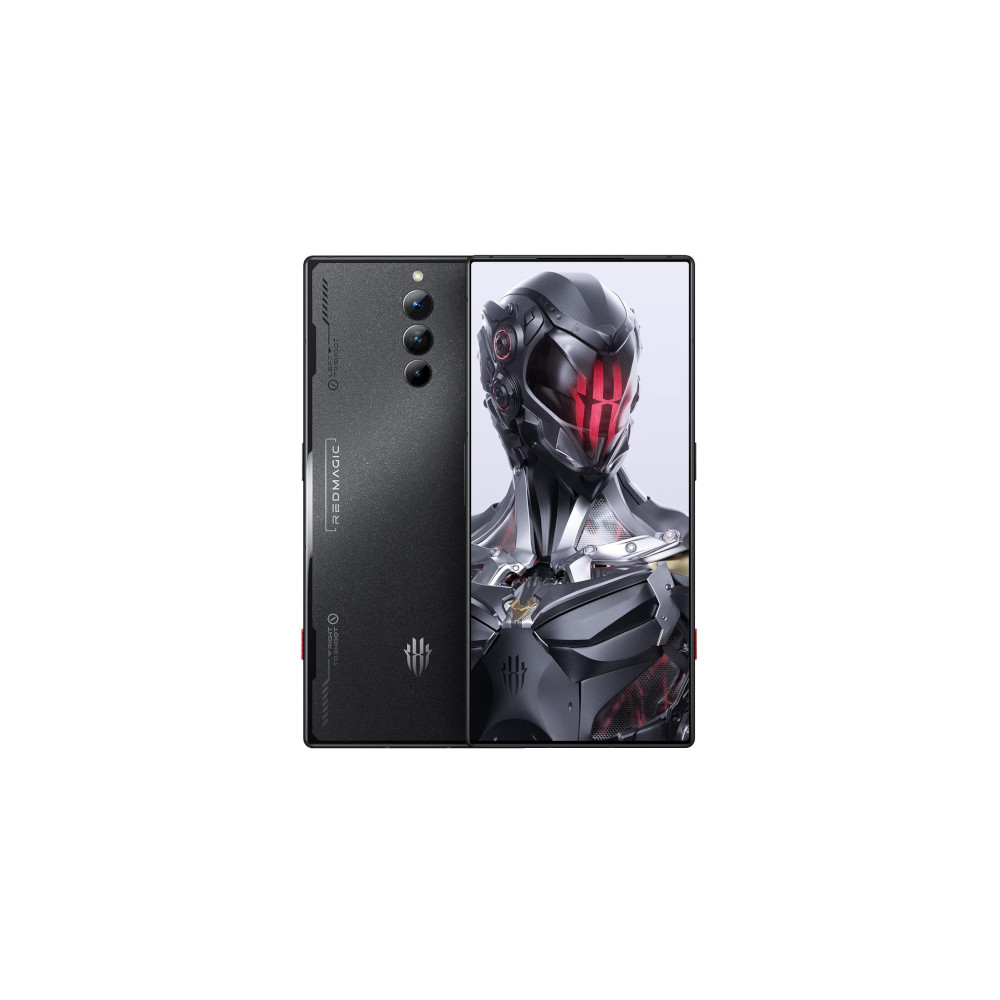




For the past decade, Qualcomm’s Snapdragon 8-series processors have been leading the charts for Android performance flagships. If you want to get the absolute best performing Android flagship, you’ll want a Snapdragon 8, but in 2024 attention has turned to the newer Snapdragon 8 Gen 3.
Nonetheless, Snapdragon 8 Gen 2 phones are still very capable in 2023. Below we take a look at some of the best Snapdragon 8 Gen 2 smartphones you can get.
The best Snapdragon 8 Gen 2 phones:
Editor’s note: We’ll regularly update this list of the best Snapdragon 8 Gen 2 phones as new devices launch.
Samsung Galaxy S23 series
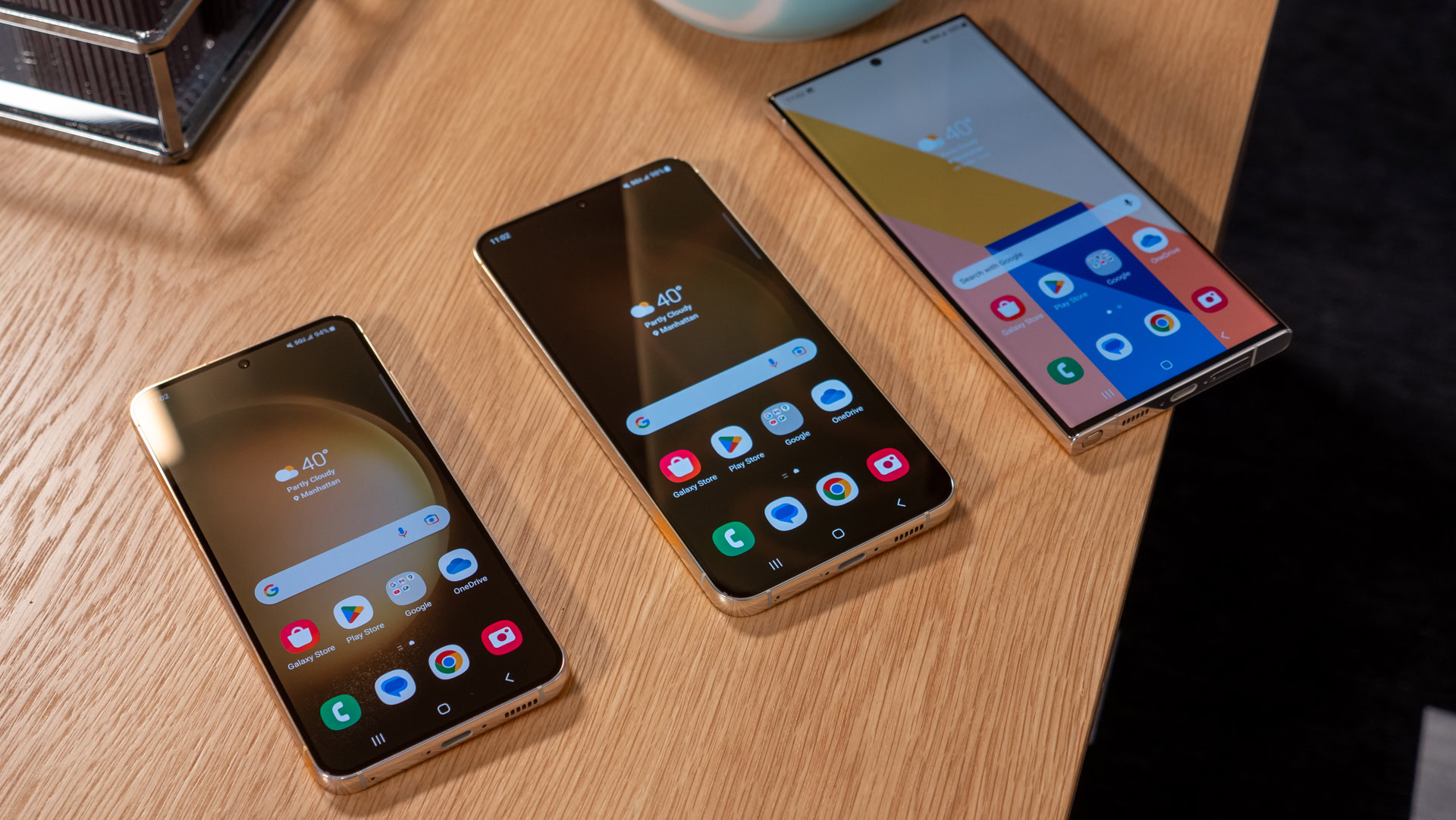
The Samsung Galaxy S23 series is easily one of the biggest showcase pieces for the Snapdragon 8 Gen 2. The reason this phone series assumes great importance this year is that Samsung has retired its Exynos processor for this cycle.
The company is selling only one version of the Galaxy S23 series: with the Snapdragon 8 Gen 2. This is a shift from its previous strategy of selling the S-series flagship in the USA with a Qualcomm processor, and then seeding Exynos processor variants in some regions. The Exynos chips have historically been inferior, which meant that these unlucky regions would get an “inferior” experience even when buying the same phone. But thankfully, we’re getting a global Galaxy S23 release with just the Snapdragon 8 Gen 2 all around.
We're getting a global Galaxy S23 release with the Snapdragon 8 Gen 2.
There’s still a twist to the tale. Samsung has not only launched its flagships on the Snapdragon 8 Gen 2, but it has also launched it on a superior version of the Snapdragon 8 Gen 2, called the Snapdragon 8 Gen 2 for Galaxy. This is a special version of the chip exclusive to Samsung flagships, and it has a higher clock speed for the Prime CPU core (from 3.2GHz to 3.36GHz) and a minor increase in the GPU clock speed (from 680MHz to 719MHz). This makes the Galaxy S23 series the best of the best among Snapdragon 8 Gen 2 flagships.
Coupled with widespread availability, exciting deals and trade-in offers, and long software support, it will become very hard for other OEMs to compete with the Galaxy S23 series, even if they manage to get a better hardware package in place. Samsung is also bumping up the camera hardware on the series, which will help the company maintain its position for smartphone camera quality. And with three phones in the series in the form of the S23, S23 Plus, and S23 Ultra, there is wider price range coverage too.
The phones within the Galaxy S23 series have fair differences, namely around their size, display, battery, cameras, and S Pen support and integration. Performance through the Snapdragon 8 Gen 2 is going to remain largely the same irrespective of which phone you choose in the series.

Snapdragon 8 Gen 2 power
Bigger battery

Beautiful display
S Pen functionality
Samsung Galaxy S23 specs
- Display: 6.1-inch, FHD+
- Chipset: Snapdragon 8 Gen 2 for Galaxy
- RAM: 8GB
- Storage: 128GB/256GB
- Cameras: 50, 12, and 10MP
- Front camera: 12MP
- Battery: 3,900mAh
- Software: Android 13
Samsung Galaxy S23 Plus specs
- Display: 6.6-inch, FHD+
- Chipset: Snapdragon 8 Gen 2 for Galaxy
- RAM: 8GB
- Storage: 256GB/512GB
- Cameras: 50, 12, and 10MP
- Front camera: 12MP
- Battery: 4,700mAh
- Software: Android 13
Samsung Galaxy S23 Ultra specs
- Display: 6.8-inch, FHD+
- Chipset: Snapdragon 8 Gen 2 for Galaxy
- RAM: 8GB/12GB
- Storage: 256GB/512GB/1TB
- Cameras: 200, 12, 10, and 10MP
- Front camera: 12MP
- Battery: 5,000mAh
- Software: Android 13
OnePlus 11
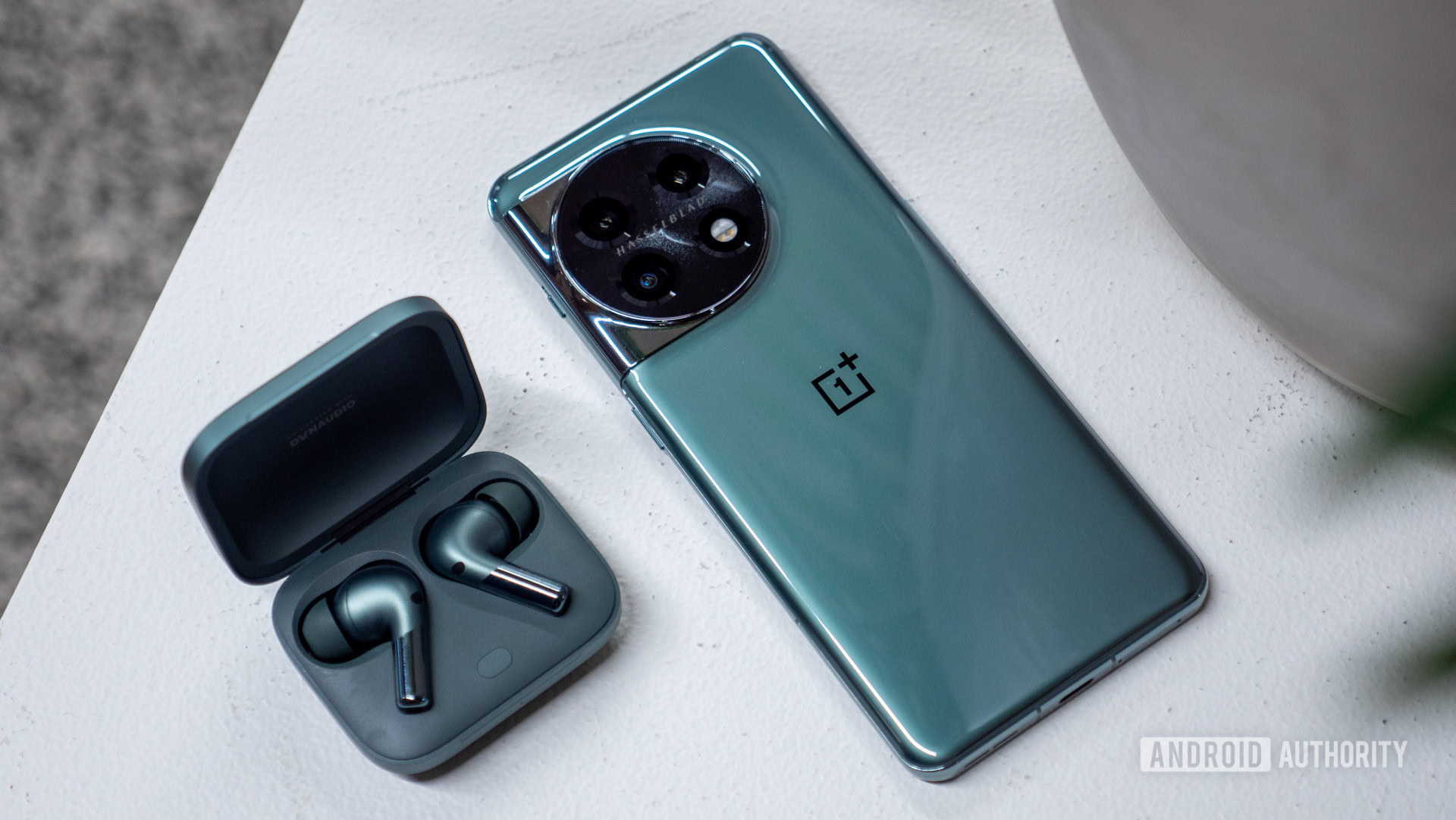
Think what you may about OnePlus’ recent performance, it’s hard to deny that the company still makes great flagships. With the Snapdragon 8 Gen 2-totting OnePlus 11, the company is looking to reclaim lost ground in the flagship space globally, especially in key markets like North America and India.
OnePlus is known for its powerful flagship phones, and the OnePlus 11 continues to walk along that path with the Snapdragon 8 Gen 2. The company is continuing its partnership with Hasselblad, but now the phone has an updated 50MP Sony IMX890 sensor. OnePlus has confirmed that there’s no Pro or T version for this year. So for all intents and purposes, the OnePlus 11 is pretty much the OnePlus 11 “Pro” too, thanks to its well-rounded specifications. The OnePlus 11 walks upon the path of practicality without going overboard. That means you can look forward to decent pricing when the device launches globally.
The OnePlus 11 walks upon the path of practicality without going overboard.
There are some curious omissions on the device, like the absence of wireless charging. Many users are also not completely satisfied with the OxygenOS experience as of late, so there’s some work to do on that end as well. The IP64 rating also leaves a lot to be desired. And the decision to stick with a 2x telephoto camera for the third sensor instead of more optical zoom affects the versatility of the camera setup.
In many ways, however, the OnePlus 11 is a successful return to the original OnePlus roots. You can pick up the OnePlus 11 for $699 for the 8GB/128GB variant, while the 16GB/256GB variant costs $799. If you want a Snapdragon 8 Gen 2 and don’t want a Samsung Galaxy, the OnePlus 11 is your best bet. The company already has decent retail and after-sales service network in several key regions, letting users enjoy a better quality of service in those locations.

OnePlus 11 specs
- Display: 6.7-inch, QHD+
- Chipset: Snapdragon 8 Gen 2
- RAM: 12GB/16GB
- Storage: 256GB/512GB
- Cameras: 50, 50 and 50MP
- Front camera: 32MP
- Battery: 4,820mAh
- Software: Android 13
Samsung Galaxy Z Fold 5
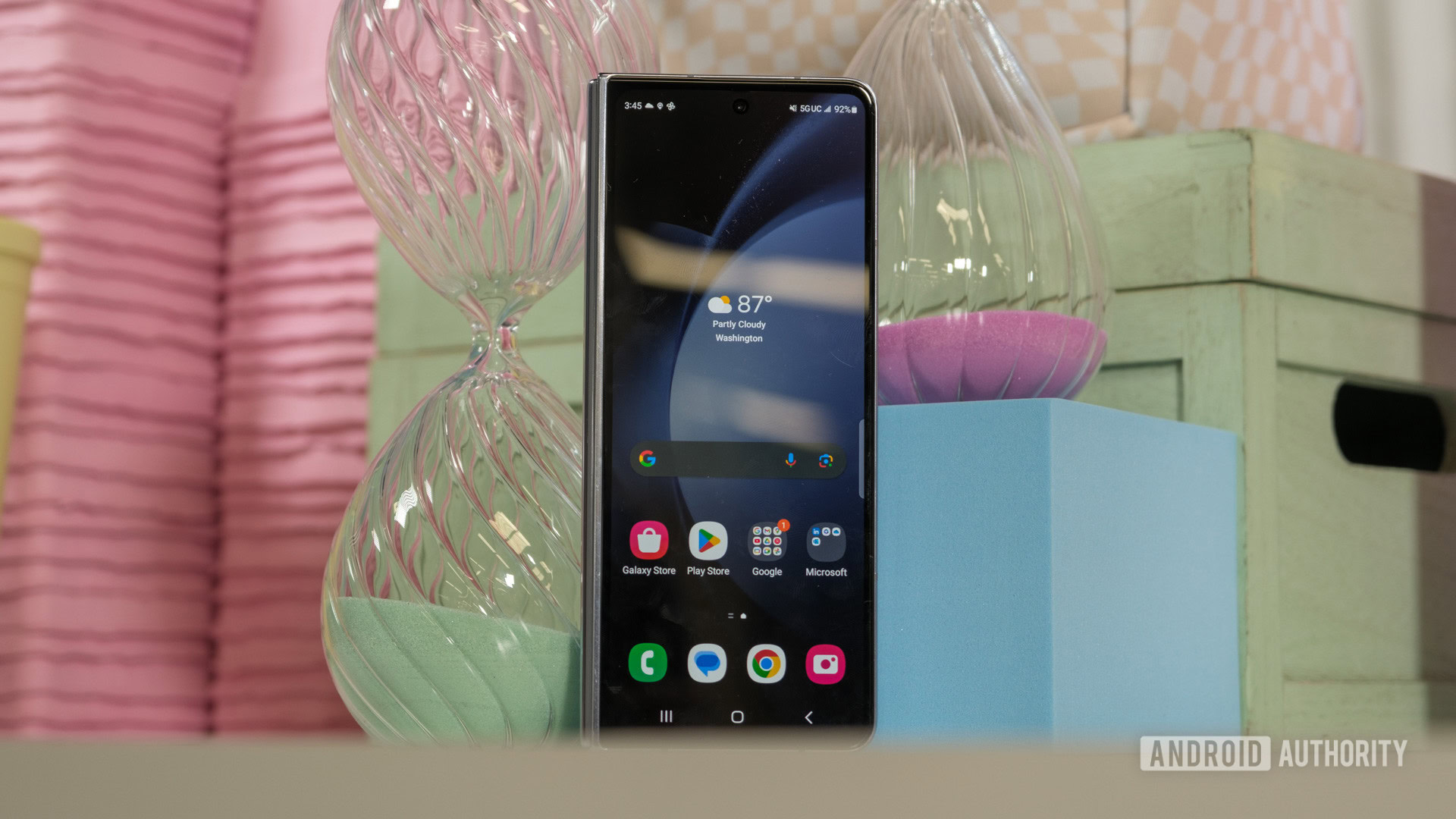
The Galaxy Z Fold 5 isone of the hottest foldable phones on the market thanks to its improved hitch and other upgrades over its predecessor. It is also powered by Qualcomm’s latest silicon, the Snapdragon 8 Gen 2. Backing up the SoC you’ll find 12GB of RAM and up to 1TB of storage. There’s also a 4,400mAh dual battery, IPX8 protection, and wireless charging.
There’s also a solid camera experience, though it’s worth noting that the Z Fold 5 retains the same cameras as its predecessor. That means you get a 50MP wide cam, 12MP ultra-wide shooter, and a 10MP telephoto lens. While it would have been nice to see some upgrades, the overall quality here is solid.
Of course the real appeal to the Fold 5 is its ability to become a tablet. The main display gets reasonably big when unfolded, at 7.6-inches. In comparison, the main folded display is 6.2-inches.
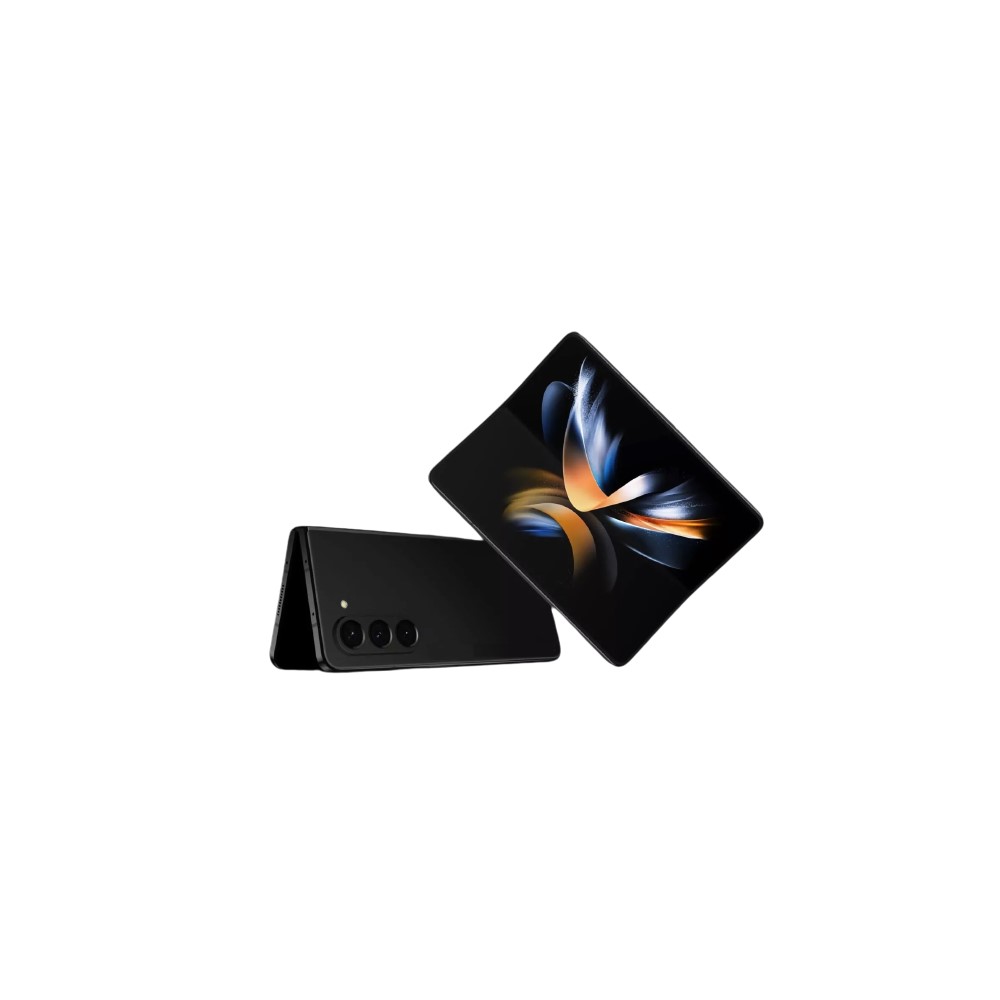

Galaxy Z Fold 5 specs:
- Interior Display: 7.6-inch AMOLED with 120Hz
- External Display: 6.2-inch external AMOLED with 120Hz
- SoC: Snapdragon 8 Gen 2
- RAM: 12GB
- Storage: 256GB, 512GB, or 1TB
- Cameras: 50, 12 and 10MP
- Front camera: 10MP, 4MP UDC
- Battery: 4,400mAh
- Software: Android 13
Samsung Galaxy Z Flip 5
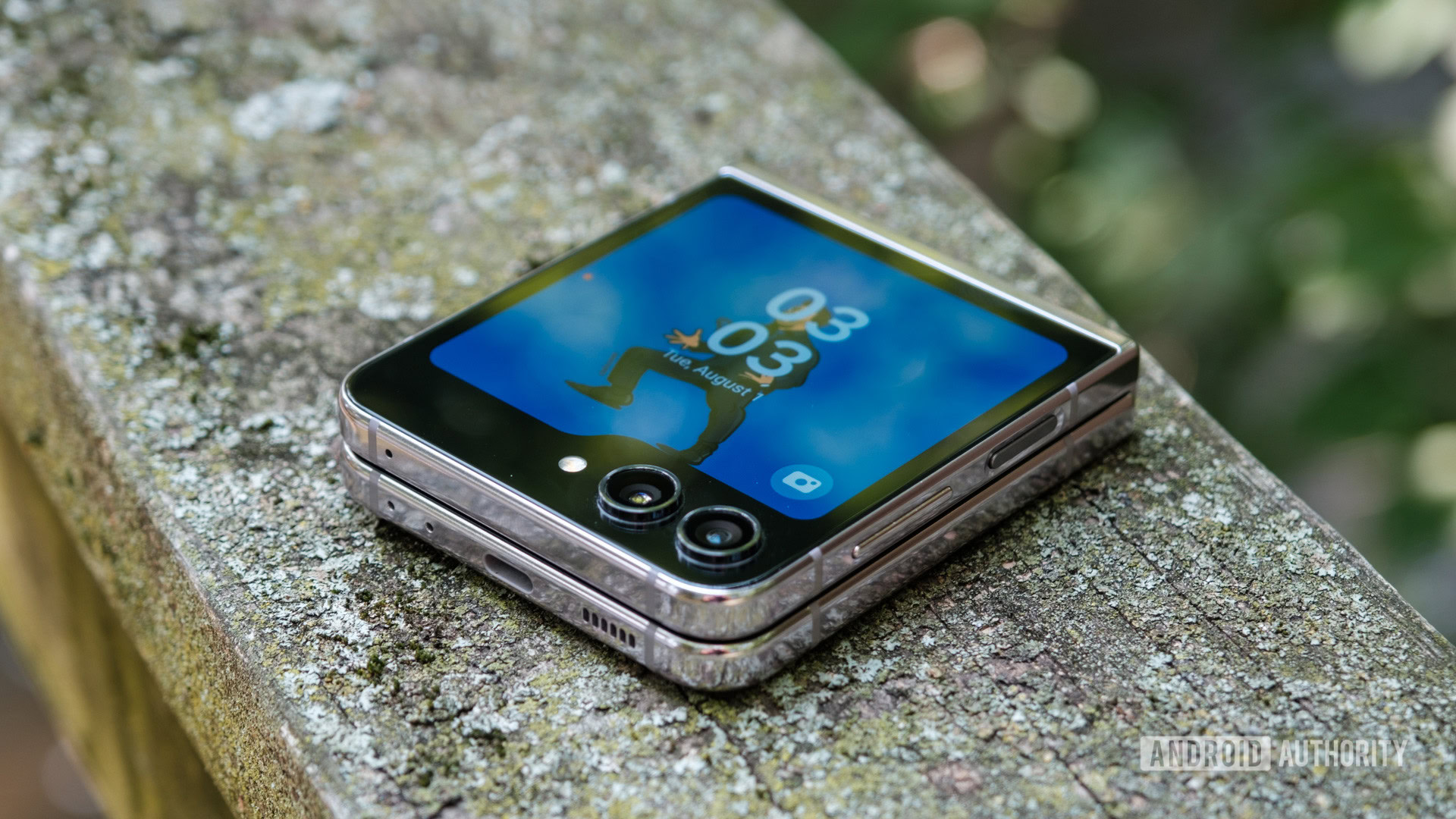
Yet another Snapdragon 8 Gen 2 powered device that has a foldable display, and again by Samsung at that. While the powerful SoC is nice, the main draw here is the unique folding design, which harkens back to the days of flip phones. Up from there’s a nice secondary display called the Flex Window, which is 3.4 inches. That’s a pretty big upgrade from the 1.9-inch display on its predecessor. The display is mostly designed with widgets in mind, though there are officially supported ways to get full-screen apps, but Samsung considers these experimental.
The other big change to the Z Flip 5 is its new gapless folding display, which makes it harder for dust and other particles to get into your display, which might scratch or otherwise damage it. While the Flip might not offer new functionality, it’s novel design tends to attract those looking for something that stands out from a sea of iPhones and other candy bar-shaped devices.
But the Flip needs to do more than look nice right? The Snapdragon 8 Gen 2 is already a step in the right direction, but the rest of the specs are solid as well including 8GB of RAM, a solid camera, and storage configurations up to 512GB. The only small downside is the 3,700 mAh battery. It’s enough to make it through a single day’s use, especially if you use the Flex Window a lot over the power-hungry main display. Still, we wish it was a bit bigger.
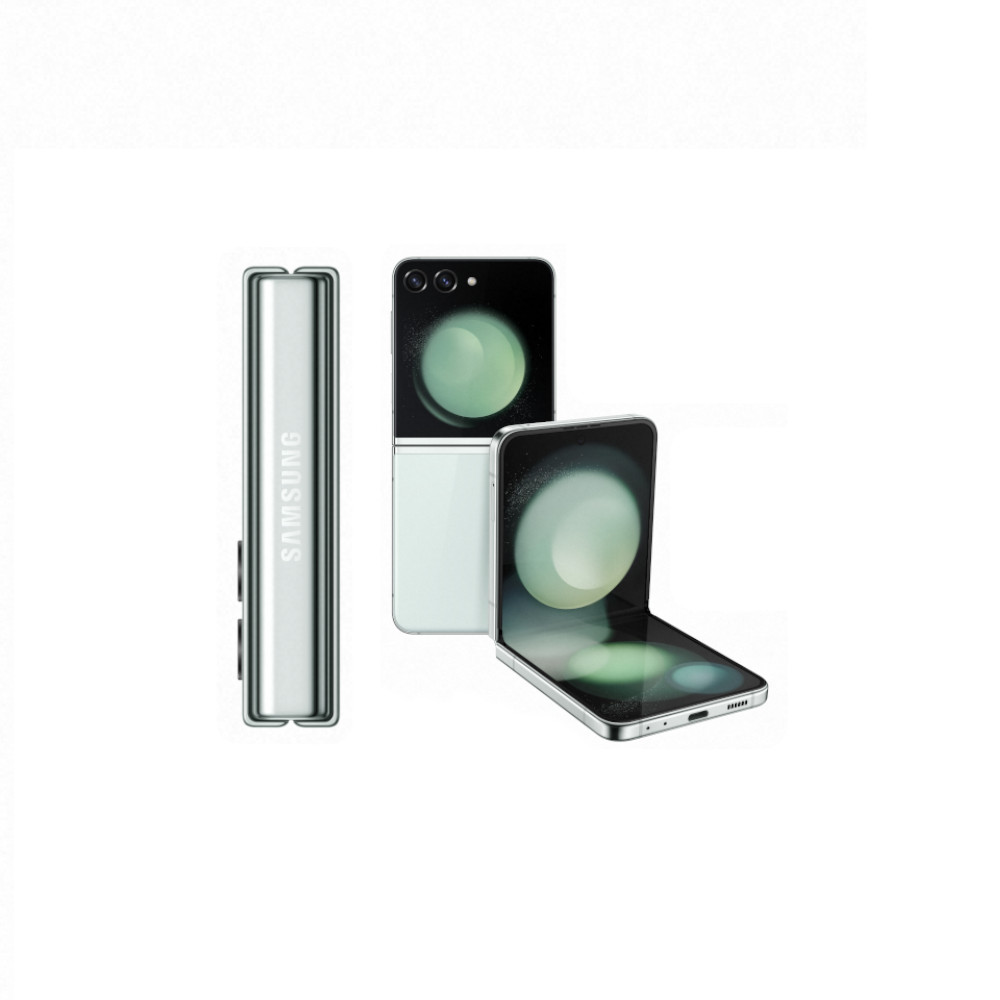

Galaxy Z Flip 5 specs:
- Internal display: 6.7-inch FHD+ AMOLED with 120Hz
- External display: 3.4-inch Super AMOLED 60Hz, 720×748
- SoC: Snapdragon 8 Gen 2
- RAM: 8GB
- Storage: 256/512GB
- Cameras: 12 and 12MP
- Front camera: 10MP
- Battery: 3,700mAh
- Software: Android 13
ASUS Zenfone 10
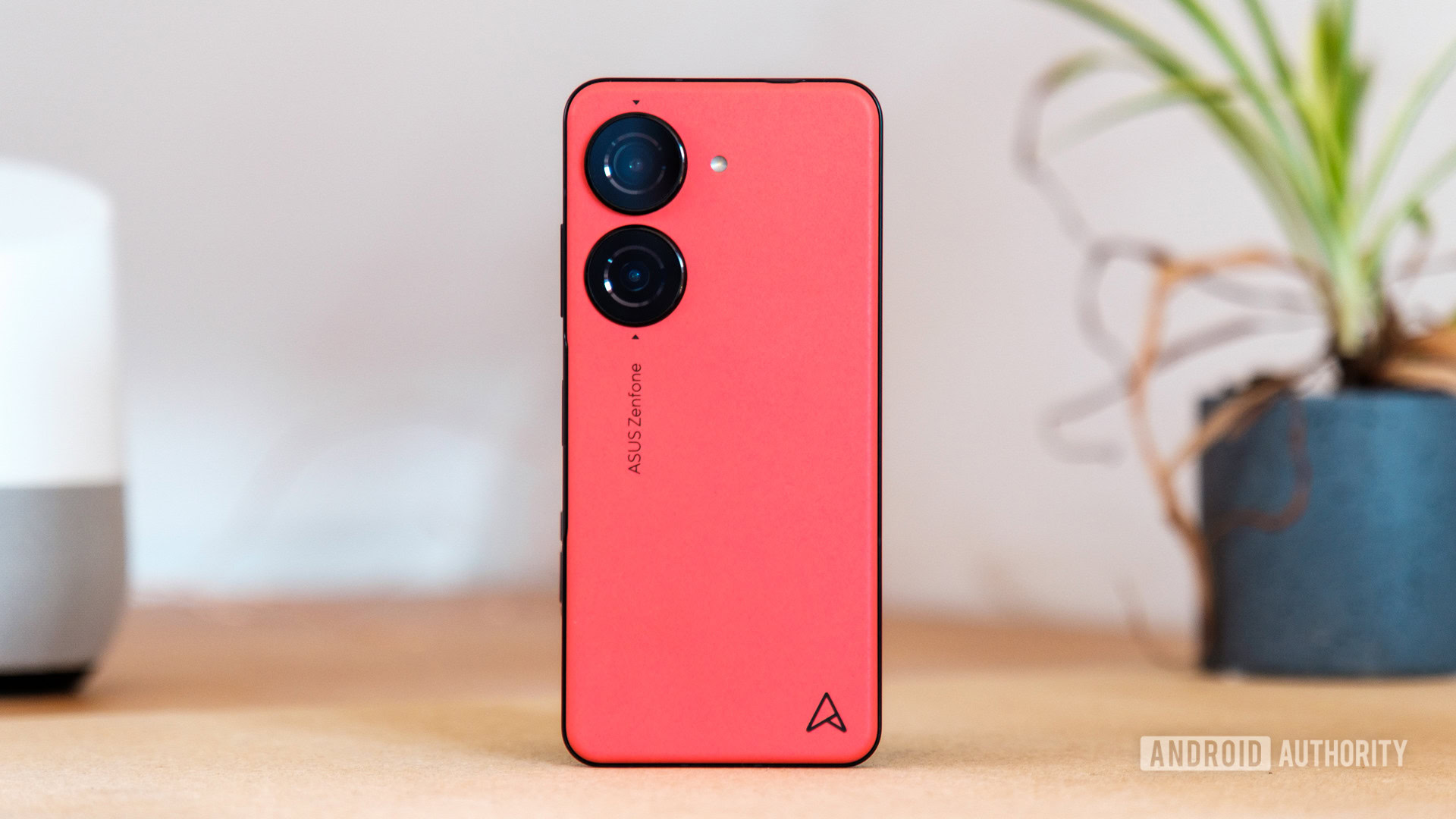
ASUS isn’t the biggest name in the smartphone world, but that doesn’t mean the ASUS ZenFone 10 isn’t worth a closer look. The Zenfone 10 is a much smaller phone than most others out there, even the Samsung Galaxy S23. This is all thanks to its relatively sleek 5.9-inch AMOLED display.
Despite the smaller stature, there’s a lot of power under the hood. You get a Qualcomm 8 Gen 2 SoC for starters.
Not impressed? You can also select a variant with up to 16GB of RAM and up to 512GB of storage. You’ll also get a reasonably large battery for a phone of this size, at 4,300mAh. This can easily make it through the whole day and can be quickly recharged with support for up to 30W. Audiophiles will also be pleased to hear the ZenFone 10 rocks a headphone jack.
Despite its compact design and relatively low asking price, the ZenFone 10 is quite the beast.
The camera package is also pretty solid here. You get a six-axis gimbal stabilizer which makes it perfect for capturing video. There’s also a 50MP main camera, and a 13MP ultrawide shooter. On the front you’ll get a 32MP selfie camera that’s perfect for sharing to social media and more.
The ZenFone 10 packs a lot of punch and yet it’s actually pretty affordable, with the base model starting at just $699.99. Even the highest-end model is just $899, despite packing 16GB of RAM and 512GB storage space. For what you get, this phone is extremely well-priced and a good choice if you’re looking for something beyond the typical Samsung, Apple, and Google options that tend to dominate the US.


ASUS Zenfone 10 specs
- Display: 5.9-inch, FHD+ Super AMOLED
- Chipset: Snapdragon 8 Gen 2
- RAM: 8GB/16GB
- Storage: 128GB/256GB/512GB
- Cameras: 50MP and 13MP
- Front camera: 32MP
- Battery: 4,300mAh
- Software: Android 13
Motorola Edge Plus
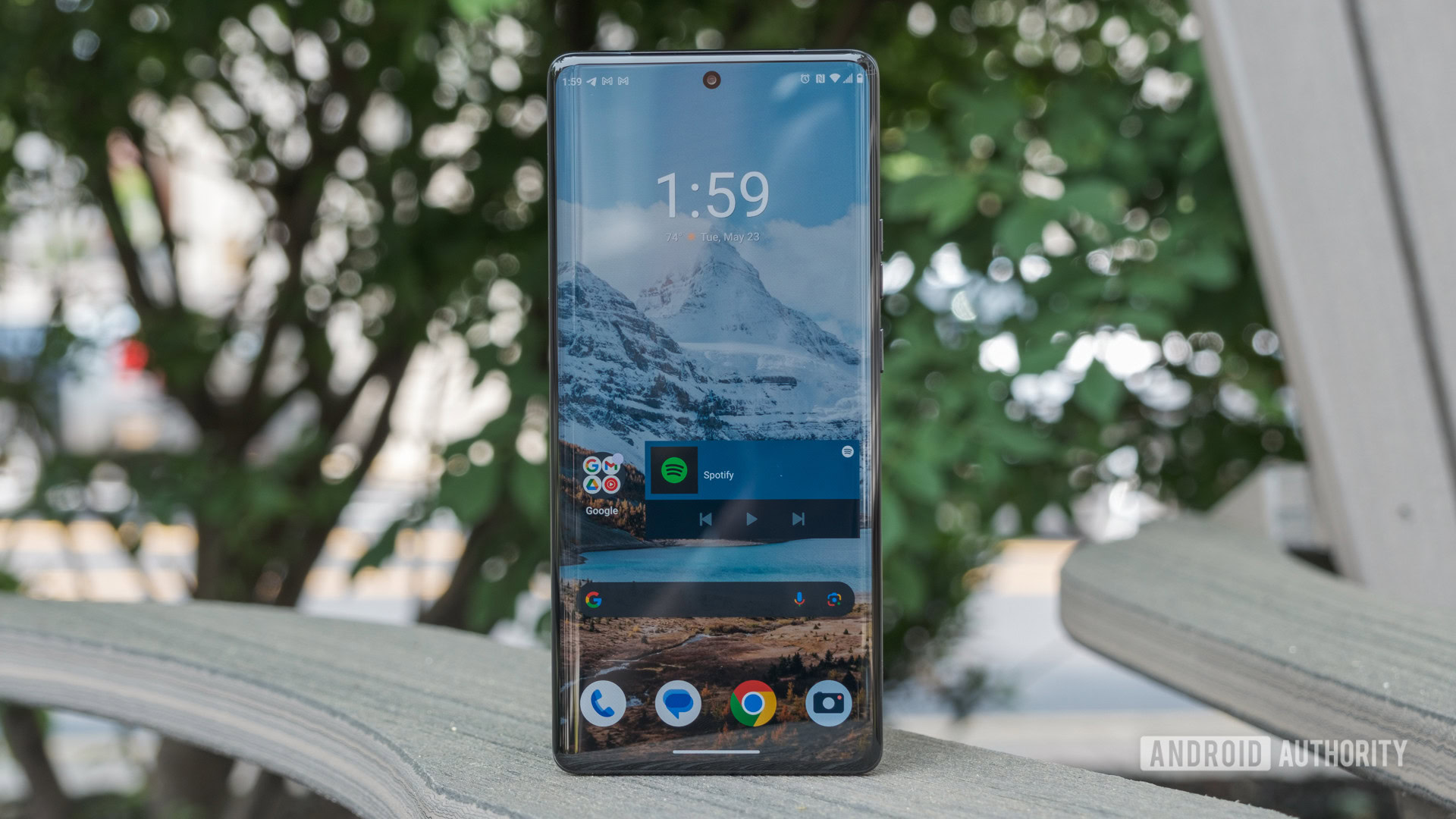
Motorola has steadily been improving its game recently with winners like the Razr Plus foldable, but its typical candy bar phones have also improved quite a bit. One of the best options out there is the Motorola Edge Plus.
You’ll get plenty of performance chops thanks to the Snapdragon 8 Gen 2 SoC onboard, which is backed by 8GB of RAM and 512GB storage. There’s also an attractive enough 6.7-inch pOLED with a 165Hz refresh rate.
Battery life isn’t a concern with the Edge Plus, as it can easily last more than a day. In our own tests, we found you’d be able to go to bed on day one with still 69% battery left. If you do kill the battery, there’s even an extremely fast 68W to help you get back up and running as quick as possible.
Motorola continues to up its game, as the Edge Plus is a great phone with a few quirks, but it's also an exceptional value.
Motorola has had a complicated history with Android updates, but the Edge Plus promises 3 full Android OS updates and 4 years of bi-monthly security patches. That’s not as nice as Google or Samsung, but it’s actually pretty solid for an Android phone maker.
Not everything is perfect. The camera system isn’t the best, the edge display is prone to accidental touches, and there’s no always on display. Historically Motorola is known for its cleaner takes on Android, yet this phone also has quite a bit of bloatware.
Despite its downsides, if you can look past the quirks, the Edge Plus is a great value, retailing for just $799.99 and often going on sale for even less.


Edge Plus (2023) specs:
- Display: 6.7-inch Full HD+
- Chipset: Snapdragon 8 Gen 2
- RAM: 8GB
- Storage: 512GB
- Cameras: 50, 50, and 12MP
- Front camera: 60MP
- Battery: 5,100mAh
- Software: Android 13


ASUS Zenfone 10 specs
- Display: 5.9-inch, FHD+ Super AMOLED
- Chipset: Snapdragon 8 Gen 2
- RAM: 8GB/16GB
- Storage: 128GB/256GB/512GB
- Cameras: 50MP and 13MP
- Front camera: 32MP
- Battery: 4,300mAh
- Software: Android 13
nubia REDMAGIC 8 Pro
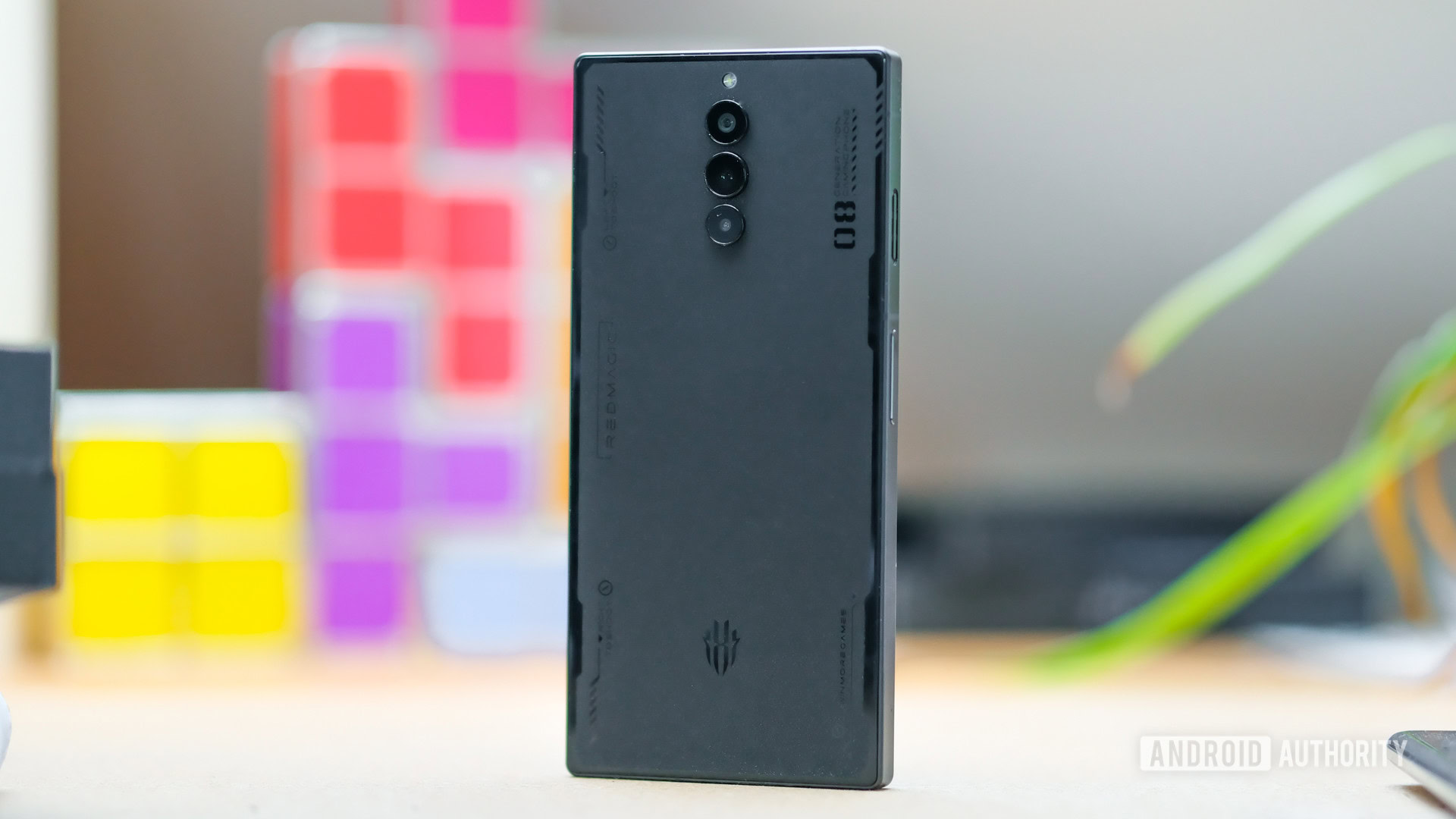
Since the Snapdragon 8 Gen 2 is a new chipset, the REDMAGIC 8 Pro was amongst the first smartphones with it that you could feasibly purchase internationally. Of course, more phones with this chip have been sold since.
The REDMAGIC 8 Pro's central theme is gaming, and it leans heavily into the Snapdragon 8 Gen 2 for this.
The REDMAGIC 8 Pro’s central theme is gaming, and it leans heavily into the Snapdragon 8 Gen 2 to achieve its objective. To make the most out of this powerful chipset, the REDMAGIC 8 Pro also features a built-in cooling fan and a large vapor chamber cooling plate, letting the phone sustain its peak performance for a longer period. The chip is flanked by UFS 4.0 storage and LPDDR5X RAM. The phone leans further into its gaming identity with a striking boxy design, capacitive shoulder triggers, and a beefy 6,000mAh battery with support for 65W USB PD fast charging. You also get a very clean front, thanks to a uniformly thin-bezelled display that has an under-display camera. The gamers out there will also appreciate the 3.5mm headphone jack.
The modest pricing of the REDMAGIC 8 Pro makes it a good option, as it starts at $649 / €649 / £579 for the 12GB/256GB variant.

nubia REDMAGIC 8 Pro specs
- Display: 6.8-inch, FHD+
- Chipset: Snapdragon 8 Gen 2
- RAM: 12GB/16GB
- Storage: 256GB/512GB
- Cameras: 50, 8, and 2MP
- Front camera: 16MP
- Battery: 6,000mAh
- Software: Android 13
vivo X90 Pro Plus
The vivo X90 Pro Plus is a successor to the excellent vivo X80 Pro and X70 Pro Plus. It embodies the spirit of the Snapdragon 8 Gen 2 in its entirety, with a slew of features that are overkill for most users. It has a great and versatile camera system on paper with four rear sensors. The primary camera is a 50MP Sony IMX989 which should produce excellent results thanks to its 1-inch sensor. There’s also vivo’s V2 imaging chip on board, lending itself once again to excellent HDR performance across the board.
The vivo X90 Pro Plus is a camera-centric smartphone that will do well for gaming and performance tasks.
You could use the vivo X90 Pro Plus as a camera-centric smartphone, and you can also use it equally well for gaming and performance tasks. The Snapdragon 8 Gen 2 ensures that you have no reason to be disappointed in either of those areas. This is a top-tier flagship done well, and you can pick up the 12GB/256GB variant in China right now for 6,499 Chinese yuan (~$960).
vivo did launch the predecessors vivo X80 Pro and X70 Pro Plus internationally, so we are crossing our fingers to see an international launch for the X90 Pro Plus as well.

vivo X90 Pro Plus specs
- Display: 6.78-inch, QHD+
- Chipset: Snapdragon 8 Gen 2
- RAM: 12GB
- Storage: 256GB
- Cameras: 64, 50, 50 and 48MP
- Front camera: 32MP
- Battery: 4,700mAh
- Software: Android 13
Xiaomi 13 Pro
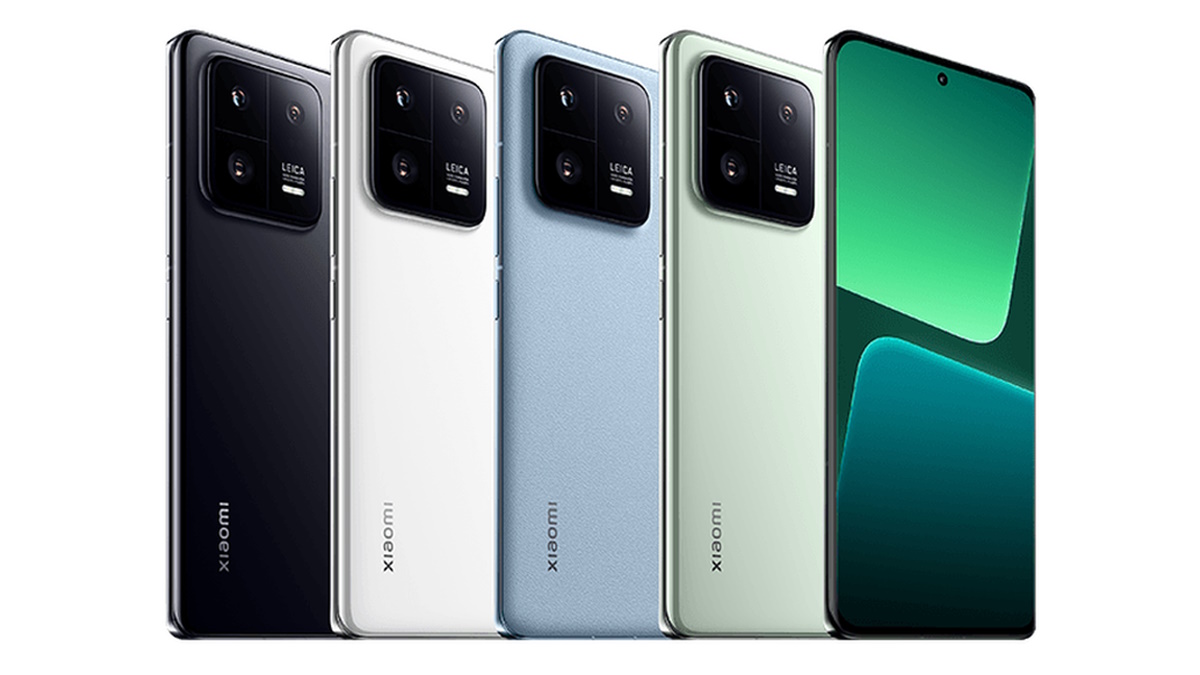
Xiaomi makes some of the best value-for-money smartphones, and their value philosophy also extends onto their flagships. For this reason, we’re also crossing our fingers to see the Xiaomi 13 Pro get a wider global release in the coming months. For now, the device is available in China, marking it as one of the best Snapdragon 8 Gen 2 devices you can buy.
What we like about the Xiaomi 13 Pro is that it balances the line between practicality and overkill. You get a slew of features that have a high-performance ceiling, but nothing too extreme to remain forever under-utilized — Xiaomi will sell you an Ultra flagship for that, hopefully. Even then, there are enough jaw-dropping features on board. For instance, you get the same 50MP Sony IMX989 sensor from the vivo X90 Pro Plus and the Xiaomi 12S Ultra, paired with two more 50MP cameras for secondary functions. There’s 120W wired fast charging, as well as 50W wireless fast charging support for its 4,820mAh battery.
As mentioned, the Xiaomi 13 Pro is available in China in a multitude of RAM and storage options, starting at just 4,999 Chinese yuan (~$735) for the 8GB/128GB variant. Compare this Chinese pricing with that of the vivo X90 Pro Plus’ Chinese pricing, and you can see why we are excited about the practicality of this top-tier flagship.
We’re expecting a global release of the Xiaomi 13 Pro in the coming months, but with just one or two RAM and storage combinations. So stay tuned!


Xiaomi 13 Pro specs
- Display: 6.73-inch, QHD+
- Chipset: Snapdragon 8 Gen 2
- RAM: 8GB/12GB
- Storage: 128GB/256GB/512GB
- Cameras: 50, 50 and 50MP
- Front camera: 32MP
- Battery: 4,820mAh
- Software: Android 13
Upcoming Snapdragon 8 Gen 2 phones
We’re at the point where upcoming Snapdragon 8 Gen 2 phones are fewer and further between. The most anticipated upcoming devices have already wrapped up for 2023. It won’t be too long before the first Snapdragon 8 Gen 3 phones show up, actually.
Do you really need a Snapdragon 8 Gen 2 series phone?
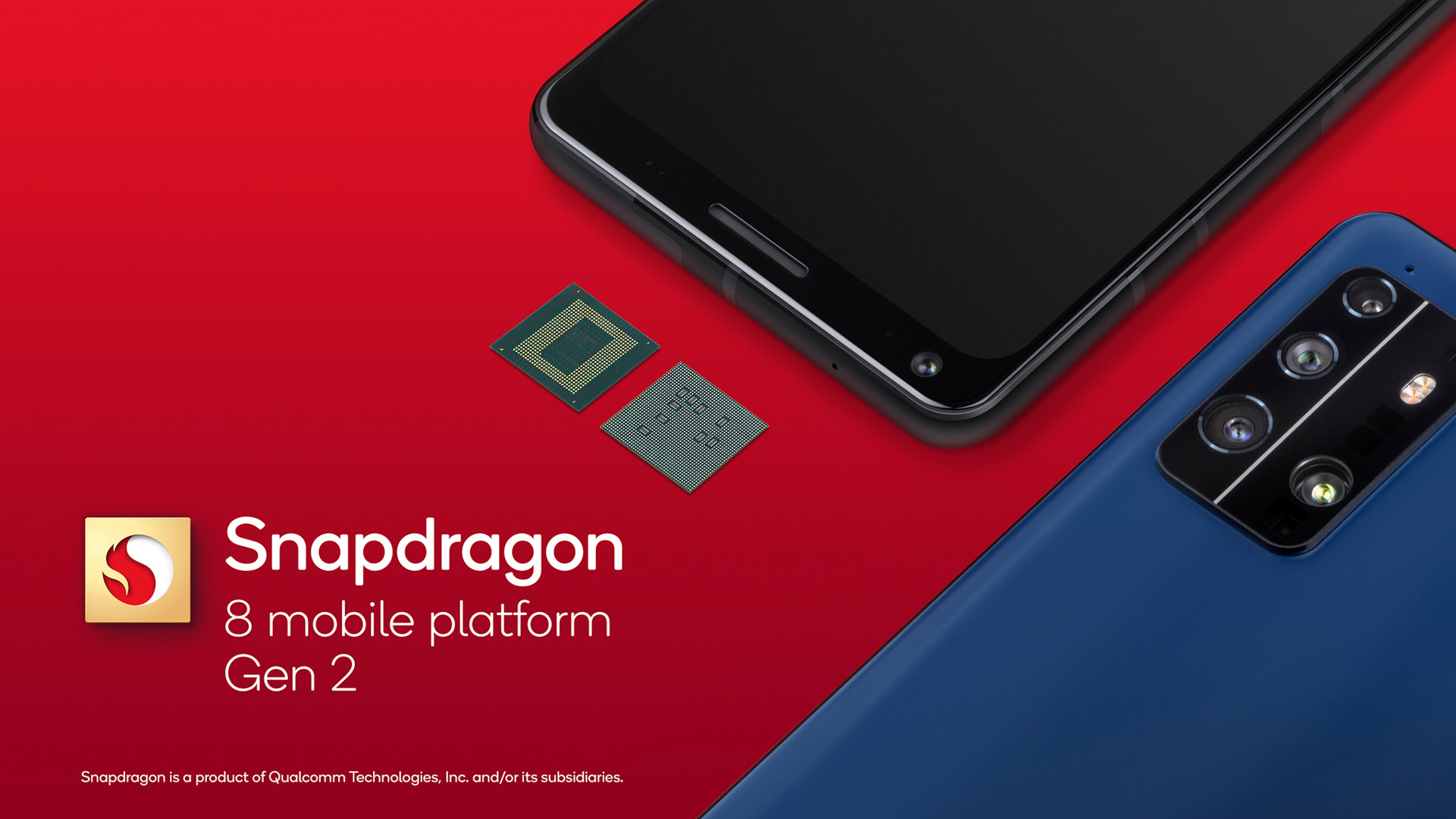
The Snapdragon 8 Gen 2 will perform great for all of your high-performance needs.
With that being said, not everyone has needs that demand so much performance regularly. If you use your phone just for social media consumption, sending messages on Facebook and WhatsApp, or watching the occasional movie on Netflix and Disney Plus, then the Snapdragon 8 Gen 2 is overkill for you. You can breeze through your day just as well with a cheaper mid-range chipset like the Snapdragon 778G or even flagship chips from 2022 like the Snapdragon 8 Gen 1 and Snapdragon 8 Plus Gen 1. Phones like the Samsung Galaxy S22 Plus and the OnePlus 10T will continue to serve the vast majority of users just fine in 2024, even for tasks that require the occasional burst of power. Even a mid-range phone like the Galaxy A53 is more than powerful enough for everyday tasks.
So unless you absolutely need a top-tier flagship in your everyday routine, you don’t particularly need a phone with the Snapdragon 8 Gen 2. But of course, carriers and OEMs will be offering very enticing deals on these overkill flagships all through 2023, and if you are due for an upgrade and don’t mind spending a bit more, it makes sense to jump onto the very best phone. You get a better smartphone with updated specs and the latest features, and in most cases, you will also get a better window for software and security updates. You will have the best experience that Android has to offer, and that’s worth taking the plunge for.
Long story short: If your budget allows for it, and you want the best of the best, get a phone with the Snapdragon 8 Gen 2. But if you can’t, you can opt for other chipsets too; you’re going to be just fine.
FAQs
The Snapdragon 8 Gen 2 was launched on November 15, 2022, at the annual Snapdragon Summit in Hawaii.
Qualcomm owns, designs, and markets the Snapdragon 8 Gen 2 chip. It is manufactured on TSMC’s 4nm fabrication process.
There are a lot of differences between the two chips:
- Fabrication process: The new SoC is manufactured on TSMC’s 4nm process, while the older SoC was manufactured on Samsung Foundry’s 4nm LPE process.
- CPU cluster arrangement: The new Gen 2 chip comes with a 1+(2+2)+3 setup, while the older Gen 1 chip comes with a 1+3+4 setup.
- CPU upgrades: Even within the cluster arrangement, the individual parts are also upgraded.
- The prime core is upgraded from Cortex-X2 to Cortex-X3.
- The performance cluster is upgraded from its 3x Cortex-A710 setup to 2x Cortex-A715 + 2x Cortex-A710.
- The efficiency cluster remains the same Cortex-A510, but it goes down from 4 cores to 3 cores, but gets a minor clock speed bump.
- GPU upgrade: Upgraded from Adreno 730 to Adreno 740 with ray tracing support.
- Modem and connectivity upgrades: Upgrades from the integrated Snapdragon X65 modem to the integrated Snapdragon X70 modem. Consequently, you get the following upgrades as well:
- Bluetooth 5.2 > 5.3
- Wi-Fi 6E > 7
- Added support for native AV1 video decoding.
Yes, this is an excellent chip. It is the prime choice for Android flagships in 2023, thanks to its excellent performance, thermal efficiency, and balanced power draw.
Yes, this chip is one of the best options for gaming on smartphones. The SoC has all the necessary features that a smartphone manufacturer will need to make an excellent gaming smartphone. In fact, it also adds in support for ray tracing on mobile games, which the predecessor lacked.
Sadly, no. While the Snapdragon 8 Gen 2 is the best that you can get on Android smartphones, Apple’s A16 Bionic found on the iPhone 14 Pro continues to remain a better chip. Apple has historically led the charts, and it continues to do so. Qualcomm’s saving grace is that the Snapdragon 8 Gen 2 has made tremendous progress in closing the gap, especially with its GPU performance which is arguably better than what you can get out of the A16 Bionic. Apple’s deep hardware-software integration also means that Apple devices are better optimized and can make the most out of the A16 Bionic. On the other hand, Qualcomm supplies the Snapdragon 8 Gen 2 to a plethora of OEMs, and the result of that is great diversity in the phones that you can buy with this still-excellent chip.
